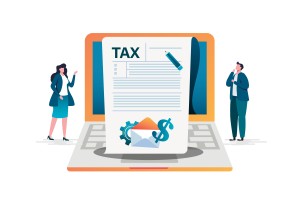 Years ago (I’m dating myself here) filing a tax return and paying your taxes through the US mail was the only option unless you wished to personally visit an IRS office and witness your tax dollars at work. Even private mail services such as FedEx were not preferred as they did not confer proof of mailing that was acceptable to the IRS.
Years ago (I’m dating myself here) filing a tax return and paying your taxes through the US mail was the only option unless you wished to personally visit an IRS office and witness your tax dollars at work. Even private mail services such as FedEx were not preferred as they did not confer proof of mailing that was acceptable to the IRS.
When electronic filing first became available, I was a skeptic. The reasons were multiple – why make it easier for the IRS to process returns? What’s in it for my client? By exporting into their system aren’t we just doing their job for them? Is it secure? E-filing was more expensive for the preparer and ultimately for the client. Our software providers charge a premium for E-filings. There is more data entry into an E-filed return and they are more labor-intensive to create. I was not a fan, and we only adopted it several years after the program was in place, and initially only for those who wished it.
It was the same story for electronic payments. By paying via paper check in the US mail, clients could take advantage of the float – the time between when you drop it in the mail and when IRS got around to cashing it. Why give the IRS the money any sooner than you have to? Writing a check is easy and simple. We all do it for other things – no learning curve required. Do you want IRS to reach into your bank account? Again, I wasn’t a fan of electronic funds transfers to pay taxes.
Times have changed.
The IRS is currently about 8 months behind in handling mail. They are still struggling to process some 2020 tax filings. With the 2021 tax filings just about to hit them, these lag times are expected to increase. Do you really want to have your tax forms thrown in that pile and risk getting letters about being late? What if your paper forms don’t get keyed in or scanned correctly? Do you want the possibility of having to resend forms and write letters defending what you already sent them?
Electronic filings are now so universal that creating a paper tax return is the exception for tax preparers, not the rule. Our internal processes are structured around E-filing and deviating from that now creates additional handling time by staff and delays in getting your work out to you.
The additional data entry required to create an E-filed return allows us to run some diagnostic checks that will hopefully prevent future correspondence with the government. E-filing will immediately alert us if your identity has been claimed by someone else filing a bogus return on your behalf, as IRS will reject a duplicate filing immediately. And there are no missing pieces.
For electronic payments, it’s all about security and timing. The float benefit was greatly diminished when the IRS established regional collection PO Boxes for payments. With that benefit mostly gone, dropping a paper check in the mail exposes it to theft or getting lost. Yesterday, the US Postal Service announced an increase in normal mail delivery times now due to COVID. Paying electronically eliminates the possibility of late payment as you get proof of payment immediately. You are forced to tell them why you are making the payment so that it won’t be misapplied or stuck in suspense somewhere waiting for a letter clarification. It’s not difficult, you don’t have to create a complicated on-line account, just a few clicks, and it’s done. And if you think IRS doesn’t know that you have that bank account and what the numbers are, think again. They have all that data available to them already.
So, my recommendation? File and pay electronically, if at all possible. Don’t expose yourself to any potential hiccups that could delay your filings or create correspondence. The less you have to deal with the IRS the better.
